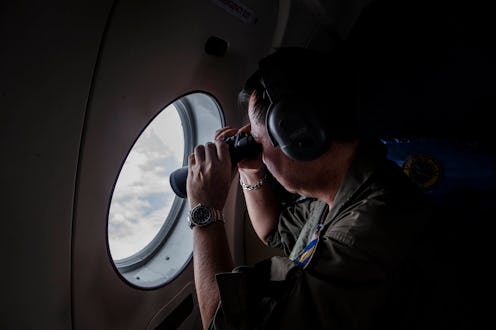News
Where Might The Rest Of MH370 Be?
On Wednesday, part of an airplane wing was discovered on the coast of the island of Reunion. It could belong to the Malaysia Airlines flight that disappeared without a trace last year. Investigators are confident that the washed-up wing flap originated from a Boeing 777, according to CNN, which could match it to MH370, since no other Boeing 777 planes are currently missing. While it's too soon to confirm, a positive match would help investigators determine where the rest of the plane is likely to be.
Australia has been leading the search for MH370 in the southern Indian Ocean, west of Australia and south of Malaysia, but it's possible that some debris floated all the way west to Reunion. If the newly discovered wing part does in fact belong to Flight 370, the search area won't change too drastically, but there are three places in the Indian Ocean the rest of the plane could be.
First, more plane parts could have followed the same path as the wing flap, meaning they would be near Reunion and Madagascar, although they would likely be more relatively small pieces of the huge plane. A French police helicopter searched nearby waters for more debris on Thursday, in case more plane parts were in the area.
The second possibility is that some debris was swept up in a southeast-bound current near Reunion, moving it back toward Australia. Lastly, large wreckage might not have made it far, and is likely still in the original search area west of Australia. Of course, there is the possibility that different parts of the plane took different paths in the ocean, leaving some debris in all three areas.
Australian Transport Safety Bureau Chief Commissioner Martin Dolan, who's leading the search for MH370, told the Associated Press that the discovery of a wing on Reunion is unlikely to alter the search for the missing plane: "It would give us confirmation that there is an aircraft definitely in the Indian Ocean." Finding a piece in this area is consistent with the leading theory that the plane crashed about 1,000 miles southwest of Australia, so most of it would probably still be there. According to Dolan, the best way to continue the search for MH370 is by using sonar and video to look for wreckage at the bottom of the ocean. The search, funded by Australia and Malaysia, has already covered 21,000 square miles of seabed so far, but a positive match on the wing flap would renew the hope that MH370 will eventually be found.
